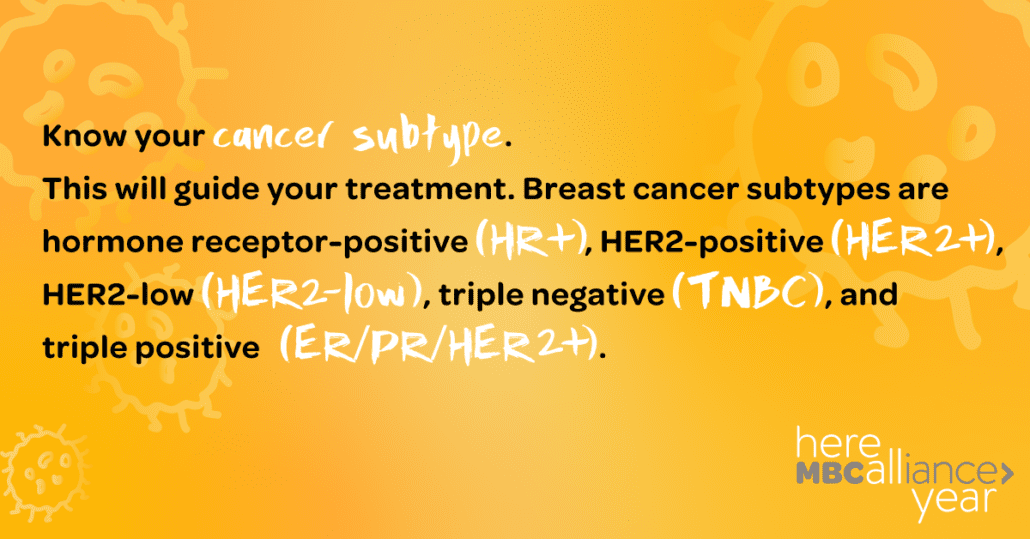Molecular Subtypes of MBC
Not all breast cancers are the same! It is important to understand what type of metastatic breast cancer you have and how it differs from other types of breast cancer. Once you’ve been diagnosed with breast cancer, your doctor will review your pathology report and the results of any imaging tests to understand the specifics of your tumor. Using a tissue sample from your breast biopsy or using your tumor if you’ve already undergone surgery, your medical team determines your breast cancer type. This information helps your doctor decide which treatment options are most appropriate for you. (Source: The Mayo Clinic — http://mbca.me/MBC-MAYO)





